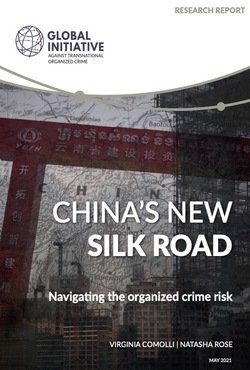China's New Silk Road: Navigating the organized crime risk
By Virginia Comolli and Natasha Rose
China’s Belt and Road Initiative (BRI) is Beijing’s flagship programme for expanding its international trade opportunities and promoting infrastructure development. The New Silk Road, as it is often referred to, now encompasses 138 countries, and its unprecedented reach attracts the attention of policymakers and businesses worldwide – and criminals alike. BRI-related projects bring (or will do so once completed) investments, services, employment opportunities and prosperity to countries across Asia, Africa and beyond. However, like all development projects, they are also likely to have unintended consequences – including corruption, criminal exploitation and infiltration. Specifically, increases in licit trade prompted by the building or expansion of road and railway networks, ports and special economic zones provide openings for illicit trade, which ever-entrepreneurial criminal networks are quick to exploit. Indeed, the main pathways and means of illicit trade are usually also the main pathways of licit trade. Failing to acknowledge that development and trade create vulnerabilities in contexts where governance and regulatory capacity is weak, crime levels are high and illicit markets are well established opens up the risk of systematic criminal exploitation of the BRI, either through boosting existing illicit routes or facilitating the emergence of new ones. In other words, these risks call for the need to ‘crimeproof’ development initiatives. The regions at the core of this study – South East Asia and central and East Africa – present a number of vulnerabilities pertaining to the quality of governance, the socioeconomic landscape, the security sphere and the environment. As such, they are already the target of criminal enterprises and are home to some of the largest narcotics, human trafficking and illicit environmental markets in the world. From the perspective of criminal actors, increased connectivity brought about by the BRI equates to easier access to source regions and consumer markets. Larger trade volumes also provide more opportunities to conceal illicit goods among cargoes and to avoid detection at borders, ports and airports. Evidence suggests that the maritime sector in these regions is particularly susceptible to criminal activities as a result of BRI-linked ports and route expansions. Yet the BRI’s reach is much further still, with supply chains extending all the way into Europe and BRI-related projects reaching Latin America and the Caribbean, which may form the focus of a future study.
Geneva: Global Initiative Against Transnational Organized Crime, 2021. 75p.


